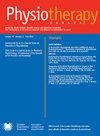结合功能自主性测量系统简表的算法,预测脑卒中后急性期护理的出院去向
IF 0.9
4区 医学
Q4 REHABILITATION
引用次数: 0
摘要
本研究开发了功能自主性测量系统(SMAF)的简表 SF-SMAF,用于测量脑卒中后接受急性期护理的患者的功能能力,确定了护理团队选择出院目的地的预测因素,并得出了一种综合 SF-SMAF 和其他预测因素的算法,以指导出院规划。这项多地点前瞻性队列研究涉及 200 名脑卒中后 8 天内接受 SMAF 评估的患者。社会人口学和临床数据均来自患者的医疗记录。我们通过线性回归来确定与 SMAF 总分接近的 SMAF 项目子集,并请专家小组进行最终筛选。我们使用逻辑回归法开发了一种算法,可通过 SF-SMAF 和其他预测因子预测出院目的地。SF-SMAF 包括四个项目:"洗涤"、"室内行走"、"判断 "和 "预算"。它与 SMAF 高度相关(R2 = 0.94),仅此一项就能预测 71% 的出院去向。如果再加上重返家园的障碍、需要护理人员的支持以及沟通能力等因素,该算法的预测率将提高到 82%。SF-SMAF 的结果与脑卒中后第一周的 SMAF 非常接近。在进一步验证后,所提出的算法可以指导临床医生使用 SF-SMAF 制定出院计划。本文章由计算机程序翻译,如有差异,请以英文原文为准。
An Algorithm, Integrating a Short Form of the Functional Autonomy Measurement System, to Predict Discharge Destination After Acute Care Post-Stroke
This study develops a short form of the Functional Autonomy Measurement System (SMAF), the SF-SMAF, for measuring functional capacity in patients undergoing acute care post-stroke, identifies predictors of the discharge destination chosen by the care team, and derives an algorithm that integrates the SF-SMAF and other predictors to guide discharge planning. This multisite prospective cohort study involved 200 patients assessed with the SMAF within 8 days post-stroke. Sociodemographic and clinical data were extracted from patients’ medical records. We performed linear regressions to identify subsets of SMAF items that closely approximate the SMAF total score and asked a panel of experts to make the final selection. We used logistic regression to develop an algorithm that predicts discharge destinations using the SF-SMAF and other predictors. The SF-SMAF includes four items: “washing”, “walking inside”, “judgment”, and “budgeting”. It is highly correlated with the SMAF ( R2 = 0.94) and, alone, predicts 71% of discharge destinations. Adding obstacles to returning home, support required from caregivers, and the ability to communicate, raises the prediction of the proposed algorithm to 82%. The SF-SMAF results closely approximate those of the SMAF in the first week post-stroke. Following further validation, the proposed algorithm could guide clinicians in using the SF-SMAF for discharge planning.
求助全文
通过发布文献求助,成功后即可免费获取论文全文。
去求助
来源期刊

Physiotherapy Canada
REHABILITATION-
CiteScore
1.90
自引率
20.00%
发文量
93
审稿时长
>12 weeks
期刊介绍:
Physiotherapy Canada is the official, scholarly, refereed journal of the Canadian Physiotherapy Association (CPA), giving direction to excellence in clinical science and reasoning, knowledge translation, therapeutic skills and patient-centred care.
Founded in 1923, Physiotherapy Canada meets the diverse needs of national and international readers and serves as a key repository of inquiries, evidence and advances in the practice of physiotherapy.
Physiotherapy Canada publishes the results of qualitative and quantitative research including systematic reviews, meta analyses, meta syntheses, public/health policy research, clinical practice guidelines, and case reports. Key messages, clinical commentaries, brief reports and book reviews support knowledge translation to clinical practice.
In addition to delivering authoritative, original scientific articles and reports of significant clinical studies, Physiotherapy Canada’s editorials and abstracts are presented in both English and French, expanding the journal’s reach nationally and internationally. Key messages form an integral part of each research article, providing a succinct summary for readers of all levels. This approach also allows readers to quickly get a feel for ‘what is already known’ and ‘what this study adds to’ the subject.
Clinician’s commentaries for key articles assist in bridging research and practice by discussing the article’s impact at the clinical level. The journal also features special themed series which bring readers up to date research supporting evidence-informed practice.
The Canadian Physiotherapy Association (CPA) is the national professional association representing almost 15,000 members distributed throughout all provinces and territories. CPA’s mission is to provide leadership and direction to the physiotherapy profession, foster excellence in practice, education and research, and promote high standards of health in Canada.
 求助内容:
求助内容: 应助结果提醒方式:
应助结果提醒方式:


